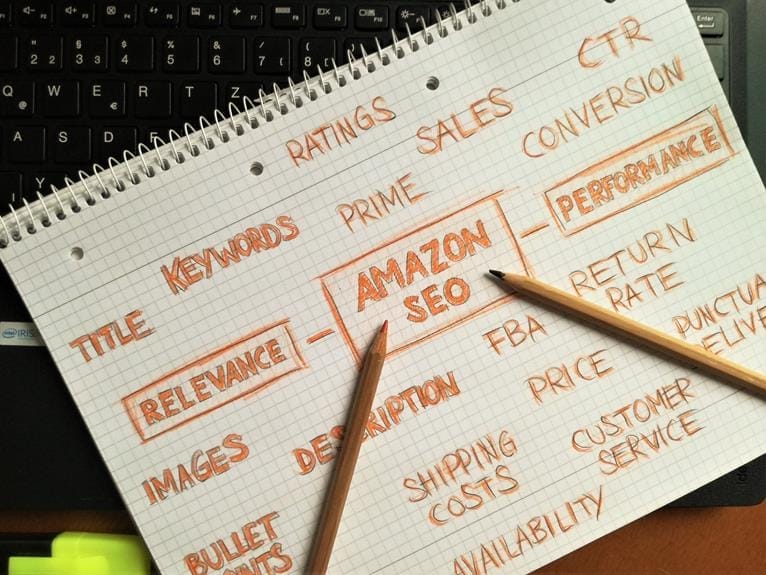Do you want to unlock the secrets to a powerful sales pipeline and skyrocket your sales?
Just like a well-oiled machine, a strong sales pipeline is the engine that propels your business forward.
In this article, we will guide you through the essential steps to effectively manage and optimize your sales pipeline.
You will discover how to break down your sales process into manageable tasks, track potential buyers, and achieve your revenue targets.
We will explore the crucial components of a successful sales pipeline, from qualifying leads to managing and updating your pipeline.
By implementing the right techniques and tools, you can unlock the hidden potential of your sales pipeline and take your sales to new heights.
Let’s dive in and unleash your sales success.
Key Takeaways
- A sales pipeline is a visual way of tracking potential buyers as they progress through different stages in the purchasing process.
- Sales pipeline stages add accountability and make sales goals easier to achieve by breaking the sales process down into small, trackable tasks.
- Building a sales pipeline requires mapping out the stages of your sales process, determining criteria for moving leads to the next stage, implementing tools and software, training your sales team, and continuously analyzing and optimizing the pipeline.
- Qualifying and contacting leads involves lead scoring, assessing budget and decision-making ability, building relationships with prospects, and adjusting your approach to close the deal.
Understanding the Sales Pipeline
To understand the sales pipeline, start by visualizing it as a horizontal bar or funnel divided into stages. This visualization is crucial because it allows you to see the entire sales process at a glance and understand where each lead stands. The importance of pipeline visualization can’t be overstated. It provides clarity, focus, and accountability, enabling you to prioritize leads and allocate resources effectively.
In addition to visualization, effective lead qualification strategies are essential for a successful sales pipeline. By qualifying leads, you can determine their potential value and prioritize your efforts accordingly. Implementing lead scoring, assessing budget and decision-making ability, and evaluating their need for your product are effective strategies for qualifying leads. These strategies ensure that you’re investing your time and resources in prospects who are most likely to convert into customers.
Components of a Sales Pipeline
Identify and prioritize leads by moving them through different stages in your sales pipeline. To maximize pipeline efficiency and track sales performance, it is crucial to understand the components of a sales pipeline. Here is a breakdown of the key components:
| Component | Description | Importance |
|---|---|---|
| Lead Generation | The process of finding potential customers | Essential for filling your pipeline with qualified leads |
| Qualification | Evaluating leads to determine their fit and potential | Helps prioritize efforts on leads with higher conversion probability |
| Nurturing | Building relationships and guiding leads through the buying journey | Ensures leads stay engaged and increases conversion rates |
| Closing | The final stage where deals are won or lost | Measures sales success and identifies areas for improvement |
Importance of Visualizing the Sales Process
Visualizing your sales process is crucial for gaining clarity and effectively managing your pipeline. By visually representing your sales stages and tracking the progress of each prospect, you can easily identify bottlenecks, prioritize tasks, and make informed decisions.
Visualizing your sales process also allows you to see the big picture and understand the flow of leads through your pipeline. This visibility is essential for identifying opportunities for improvement and optimizing your sales pipeline.
By tracking the performance of each stage, you can identify areas where prospects are getting stuck or dropping off, and take proactive measures to address these issues.
With a clear visualization of your sales process, you can ensure that every prospect is moving smoothly through the pipeline, increasing your chances of closing deals and achieving your sales goals.
Determining the Stages of Your Sales Pipeline
As you determine the stages of your sales pipeline, it’s important to understand the progression of leads and prospects through the purchasing process. By determining pipeline stages, you can optimize your pipeline performance and ensure smooth and efficient sales operations.
Start by analyzing your sales process and identifying key milestones that indicate progress towards a sale. Consider factors such as lead qualification, product demonstration, proposal submission, and closing. Each stage should have clear criteria for advancement, allowing you to track the status of each lead and ensure that they’re moving through the pipeline effectively.
Regularly review and refine your pipeline stages based on data and insights to improve overall performance. Take action now to build a strong sales pipeline that drives success for your business.
Building an Effective Sales Pipeline
To build an effective sales pipeline, you need to clearly define the stages and criteria for moving leads through the process. This ensures that everyone on your sales team understands the progression of a lead and knows when to take action. By implementing a well-defined pipeline, you can optimize your sales process and improve sales forecasting.
Here is an example of how you can structure your sales pipeline:
| Stage | Criteria |
|---|---|
| Prospecting | Identify potential leads through research and outreach |
| Qualifying | Assess lead’s budget, decision-making ability, and need for your product |
| Presenting/Demonstrating | Showcase your product to the lead and address their specific needs |
| Proposing | Provide a detailed proposal and pricing for the lead |
| Closing | Finalize the deal and secure the sale |
Implementing Tools for Pipeline Management
Implementing tools for effective management of your sales pipeline is crucial for optimizing your sales process and achieving your revenue targets.
By utilizing tools for automation, you can streamline your pipeline and ensure that no leads fall through the cracks. These tools can help you track and measure pipeline success, allowing you to identify areas for improvement and make data-driven decisions.
With automation, you can automate repetitive tasks, such as follow-ups and data entry, freeing up time for your sales team to focus on building relationships and closing deals.
Additionally, these tools provide real-time visibility into the health of your pipeline, enabling you to identify bottlenecks and take proactive steps to keep deals moving forward.
Ultimately, implementing the right tools for pipeline management is the key to maximizing efficiency and driving revenue growth.
Training Your Sales Team on Pipeline Usage
Train your sales team on how to effectively utilize the sales pipeline. By providing them with proper training techniques, you can optimize the pipeline and maximize its potential for generating sales.
Start by educating your team on the purpose and benefits of the pipeline, explaining how it can help them track and manage their deals more efficiently. Teach them how to navigate through the different stages of the pipeline and the criteria for moving leads from one stage to another.
Additionally, emphasize the importance of regularly updating and maintaining the pipeline to ensure accuracy and effectiveness. Encourage your team to use the pipeline as a tool for prioritizing tasks and staying organized.
With the right training, your sales team will be equipped to leverage the power of the sales pipeline and drive greater success.
Qualifying and Contacting Leads
How can you effectively qualify and contact leads in your sales pipeline? Qualifying and contacting leads is essential for a successful sales pipeline. By using lead scoring techniques and effective prospect nurturing, you can ensure that you are targeting the right leads and building relationships with them. Here is a table highlighting some strategies for qualifying and contacting leads:
| Lead Scoring Techniques | Effective Prospect Nurturing |
|---|---|
| Assessing lead’s budget | Demonstrating mindfulness of their needs |
| Evaluating decision-making ability | Nurturing them throughout the buyer’s journey |
| Evaluating need for your product | Building trust with personalized interactions |
Building Relationships With Prospects
To build strong relationships with prospects in your sales pipeline, it’s crucial to actively engage with them throughout their buyer’s journey.
Building trust is key to optimizing pipeline performance. Take the time to understand your prospects’ needs and demonstrate how your product or service can solve their problems.
Show empathy and be responsive to their questions and concerns. Nurture them with personalized content and regular follow-ups.
Actively listen to their feedback and address any objections they may have. By consistently delivering value and demonstrating your expertise, you can build trust and credibility with your prospects.
This won’t only increase the likelihood of closing deals but also lead to long-term customer loyalty and referrals.
Closing Deals and Handling Objections
By actively addressing objections and confidently closing deals, you can successfully navigate through the final stages of the sales pipeline. Overcoming objections is a crucial skill in closing deals and securing sales. When a prospect raises an objection, listen attentively and empathize with their concerns. Then, respond with confidence and provide relevant information that addresses their objections directly.
Use persuasive techniques to negotiate deals and find mutually beneficial solutions. Understand the prospect’s needs and tailor your approach accordingly. Be prepared to make concessions if necessary, but also assert the value and benefits of your product or service.
Managing and Updating Your Pipeline
To effectively manage and update your sales pipeline, implement consistent practices and regularly track your deals and tasks. By updating pipeline metrics and optimizing your sales process, you can ensure that your pipeline remains accurate and efficient.
Start by developing a habit of regularly moving deals through the pipeline and treating pipeline stages like a to-do list. Define clear criteria for moving deals from one stage to another and consider breaking broader stages into smaller, manageable stages.
It’s important to balance the importance of the pipeline with the time spent on managing it. Utilize tools like sticky notes, spreadsheets, or a CRM to build and maintain the pipeline. Consider using a CRM option like Pipedrive, which offers enhanced functionality and automation.
Regularly updating and managing your pipeline will help you stay organized, meet targets, and maximize your sales potential.
Defining Criteria for Moving Deals
Now, let’s delve into how you can define the criteria for moving deals in your sales pipeline.
Moving leads through your pipeline is crucial for optimizing your sales process and increasing your chances of closing deals.
To define the criteria for moving deals, consider factors such as the prospect’s level of engagement, their willingness to move forward, and their alignment with your ideal customer profile.
Look for specific actions or milestones that indicate a prospect’s readiness to progress, such as attending a demo or providing budget information.
Balancing Time Spent on Pipeline Management
How can you effectively balance your time spent on pipeline management to ensure maximum productivity and efficiency?
Time optimization in pipeline management is crucial for sales success. To streamline pipeline processes for efficiency, start by prioritizing your tasks. Focus on high-value activities that directly contribute to closing deals and generating revenue.
Set aside dedicated time for pipeline management and stick to it. Use tools and technology to automate repetitive tasks and streamline your workflow.
Regularly analyze and assess your pipeline to identify bottlenecks and areas for improvement. Delegate tasks when necessary to free up your time for more strategic activities.
Using Tools for Pipeline Maintenance
For effective maintenance of your sales pipeline, rely on tools for streamlining and managing your pipeline tasks. Using automation in pipeline management can greatly enhance your efficiency and productivity. By utilizing tools such as customer relationship management (CRM) software, you can easily track and update your pipeline in real-time. These tools offer features like automated task reminders, email templates, and contact management, making it easier to stay organized and on top of your sales activities.
Additionally, implementing best practices for pipeline reporting is crucial for accurate analysis and decision-making. Make sure to regularly review and analyze your pipeline data to identify trends, assess performance, and make informed strategic decisions.
Benefits of a Well-Implemented Sales Pipeline
There are several key benefits to implementing a well-structured sales pipeline.
One of the main advantages is improving sales efficiency. By having a clear and organized pipeline, you can easily track and prioritize leads, allowing your sales team to focus their efforts on the most promising opportunities. This not only saves time but also increases the chances of closing deals successfully.
Another benefit is the ability to measure pipeline performance. A well-implemented sales pipeline provides visibility into the progress of deals at each stage, allowing you to identify bottlenecks and areas for improvement. By analyzing the data from your pipeline, you can make informed decisions and optimize your sales process for better results.
Conclusion
So, there you have it! By unlocking the secrets to a powerful sales pipeline, you can boost your sales and achieve your revenue targets.
With a well-implemented pipeline, you’ll be able to effectively manage and optimize your sales process, driving success in your business.
Visualizing the sales process, defining stages, and using the right tools are all essential components for building an effective pipeline.
Take action now and unlock the potential to take your sales to new heights!







